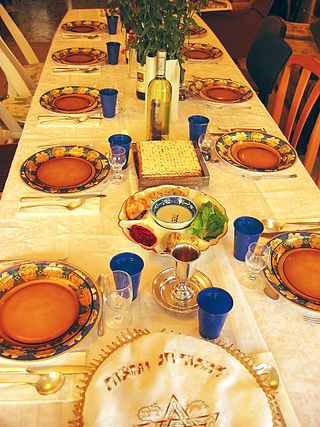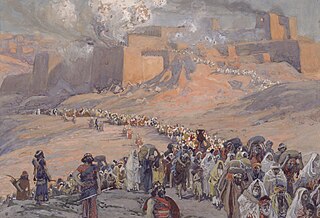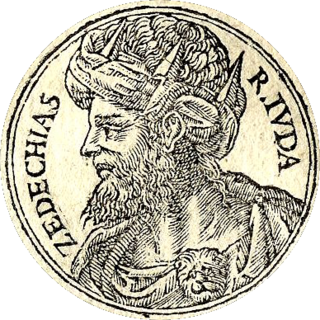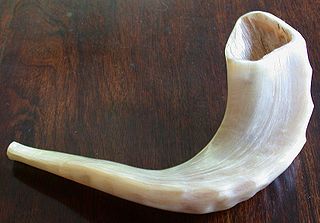
The Hebrew calendar, also called the Jewish calendar, is a lunisolar calendar used today for Jewish religious observance and as an official calendar of Israel. It determines the dates of Jewish holidays and other rituals, such as yahrzeits and the schedule of public Torah readings. In Israel, it is used for religious purposes, provides a time frame for agriculture, and is an official calendar for civil holidays alongside the Gregorian calendar.

Nisan in the Babylonian and Hebrew calendars is the month of the barley ripening and first month of spring. The name of the month is an Akkadian language borrowing, although it ultimately originates in Sumerian nisag "first fruits". In the Hebrew calendar it is the first month of the ecclesiastical year, called the "first of the months of the year", "first month", and the month of Aviv בְּחֹ֖דֶשׁ הָאָבִֽיב ḥōḏeš hāʾāḇîḇ). It is called Nissān in the Book of Esther. It is a month of 30 days. In the year 2025, 1 Nisan will occur on 30 March. Counting from 1 Tishrei, the civil new year, it would be the seventh month, but in contemporary Jewish culture, both months are viewed as the first and seventh simultaneously, and are referred to as one or the other depending on the specific religious aspects being discussed.

The Babylonian captivity or Babylonian exile was the period in Jewish history during which a large number of Judeans from the ancient Kingdom of Judah were forcibly relocated to Babylonia by the Neo-Babylonian Empire. The deportations occurred in multiple waves: After the siege of Jerusalem in 597 BCE, around 7,000 individuals were deported to Mesopotamia. Further deportations followed the destruction of Jerusalem and Solomon's Temple in 587 BCE.

Zedekiah was the twentieth and final King of Judah before the destruction of Jerusalem by Nebuchadnezzar II of Babylon. His birth name was Mattaniah/Mattanyahu.

Purim is a Jewish holiday that commemorates the saving of the Jewish people from annihilation at the hands of an official of the Achaemenid Empire named Haman, as it is recounted in the Book of Esther.

Shevat is the fifth month of the civil year starting in Tishre and the eleventh month of the ecclesiastical year on the Hebrew calendar starting in Nisan. It is a month of 30 days. Shevat usually occurs in January–February on the Gregorian calendar. The name of the month was taken from the Akkadian language during the Babylonian Captivity. The assumed Akkadian origin of the month is Šabātu meaning strike that refers to the heavy rains of the season. In Biblical sources, the month is first mentioned by this name in the book of prophet Zechariah.

Av is the eleventh month of the civil year and the fifth month of the ecclesiastical year on the Hebrew calendar. It is a month of 30 days, and usually occurs in July–August on the Gregorian calendar.

Iyar is the eighth month of the civil year and the second month of the Jewish religious year on the Hebrew calendar. The name is Babylonian in origin. It is a month of 29 days. Iyar usually falls in April–May on the Gregorian calendar.

Tevet is the fourth month of the civil year and the tenth month of the ecclesiastical year on the Hebrew calendar. It follows Kislev and precedes Shevat. It is a month of 29 days. Tevet usually occurs in December–January on the Gregorian calendar. In the Babylonian calendar its name was Araḫ Ṭebētum, the "muddy month".

Tishrei or Tishri is the first month of the civil year and the seventh month of the ecclesiastical year in the Hebrew calendar. The name of the month is Babylonian. It is a month of 30 days. Tishrei usually occurs in September–October on the Gregorian calendar.

Sivan is the ninth month of the civil year and the third month of the religious year on the Hebrew calendar. It is a month of 30 days. Sivan usually falls in May–June on the Gregorian calendar.

Elul is the twelfth month of the civil year and the sixth month of the religious year in the Hebrew calendar. It is a month of 29 days. Elul usually occurs in August–September on the Gregorian calendar.

Jeconiah, also known as Coniah and as Jehoiachin, was the nineteenth and penultimate king of Judah who was dethroned by the King of Babylon, Nebuchadnezzar II in the 6th century BCE and was taken into captivity. He was the son and successor of King Jehoiakim, and the grandson of King Josiah. Most of what is known about Jeconiah is found in the Hebrew Bible. Records of Jeconiah's existence have been found in Iraq, such as the Jehoiachin's Rations Tablets. These tablets were excavated near the Ishtar Gate in Babylon and have been dated to c. 592 BCE. Written in cuneiform, they mention Jeconiah and his five sons as recipients of food rations in Babylon.

Jehoiakim, also sometimes spelled Jehoikim was the eighteenth and antepenultimate King of Judah from 609 to 598 BC. He was the second son of King Josiah and Zebidah, the daughter of Pedaiah of Rumah. His birth name was Eliakim.
Tenth of Tevet, or Asarah BeTevet, the tenth day of the Hebrew month of Tevet, is a fast day in Judaism. It is one of the minor fasts observed even in erev Shabbat from before dawn to nightfall, while other fast days are then postponed after Shabbat. The fast mourns the 587 BCE siege of Jerusalem by Nebuchadnezzar II of Babylonia—an event that began on that date and ultimately culminated in the destruction of Solomon's Temple, the downfall of the Kingdom of Judah, and the Babylonian exile of the Judeans.

Tammuz, or Tamuz, is the tenth month of the civil year and the fourth month of the ecclesiastical year on the Hebrew calendar, and the modern Assyrian calendar. It is a month of 29 days, which occurs on the Gregorian calendar around June–July.
Isru Chag refers to the day after each of the Three Pilgrimage Festivals in Judaism: Passover, Shavuot and Sukkot.
Yom tov sheni shel galuyot, also called in short yom tov sheni, means "the second festival day in the Diaspora". This is a principle in halakha that mandates the observance of an additional day for Jewish holidays outside the Land of Israel.

Pesach Sheni occurs every year on 14 Iyar. This is exactly one month after 14 Nisan, the day before Passover, which was the day prescribed for bringing the Korban Pesach in anticipation of that holiday. As described in the source text for this mitzvah, the Israelites were about to celebrate Passover one year after leaving Egypt.
Sfeka d'yoma is a concept and legal principle in Jewish law which explains why some Jewish holidays are celebrated for one day in the Land of Israel but for two days outside the Land. The implications of sfeka d'yoma are discussed in Rosh Hashanah 21a and in the commentaries and poskim.
















